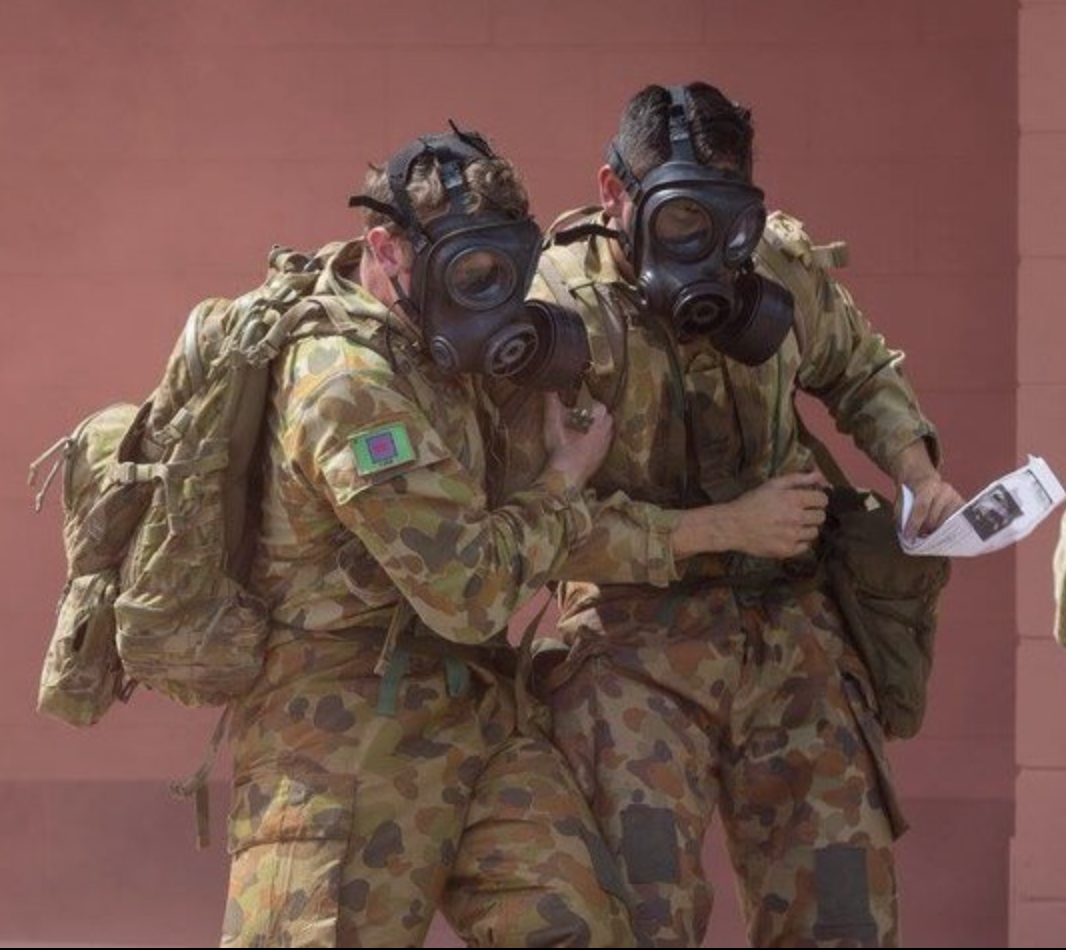
As I cough and sniffle, suffering the effects of a Canberra winter, I remember that germs have two effects on us. First, they help us build an immunity to the common cold and illness and, second, they have the ability to kill. Maybe that’s a bit dramatic, however, biological warfare is traced back to the medieval days when water sources were poisoned with dead animals. So why is it when future warfare is mentioned I think that the weapon of concern is not necessarily the super awesome space laser with the ability to emit an electromagnetic pulse able to shut down cities, but rather an outbreak of a superbug or killer virus? Typical biological agents are hard to detect, have the ability to spread throughout a population quickly, shut down transportation networks and strain medical resources. So what part of that isn’t enticing to a future adversary?
In an effort to see what else was out there (and aid in procrastination) I googled ‘how to prepare for superbugs’ and stumbled across an article on Bio Foundry’s in Sydney. Maybe the tactical exercise world has made me think like my enemy, but it scared me. In a world where we want people to innovate and experiment, do we want them to have the capacity to experiment on something that could have the potential to be a weapon in the future warfare? Much like the improvised explosive devices, biological weapons can be simple and cheap, and with active bio-communities popping up it makes this even more accessible. So the question is raised – how do we prepare the force for a weapon we can’t see, smell (in most part – some biohazards stink!) or taste?
An opinion in the US is ‘To Know the Future of Biological Weapons, Look to the Past’ through leveraging off the lessons identified during the cold war era. Medical countermeasures (vaccines or drugs) and bio surveillance (temperature screening or testing) were areas needed for the future force to focus on. However, the 2014 outbreak of Ebola in West Africa tested the global response to an outbreak. This response was a combination of military, other government agencies and non-government organisations. Generally speaking, the global response was slow and nations were hesitant to expose their own to this threat (Australia being a case in point). The professionals did the best they could with what they had. Training, logistics and disposal of contaminated waste were lessons identified and resulted in organisations looking to the military to fix these shortfalls. Are our forces trained and equipped to work in this environment? West Africa was a permissive and a relatively controlled environment, add in the chaos and friction of war and you have a cauldron of complexity. Are our forces trained and equipped to not only work in that environment but also to fight? Can our medical staff identify if a force has been exposed to a biological agent?
In a discussion on the future of war, there is the temptation to be seduced by new, shiny amazing technology, however, the possibility of facing an adversary who can use relatively low tech solutions to incapacitate or destroy a force cannot be taken off the table. That’s the future of warfare I think we need to be prepared for.
About the author
Jasmin Diab is a Royal Australian Engineer and committee member for Women in Nuclear Australia. She is passionate about the inclusion of scientific thought in warfare and is the Director of Operations for DEF Australia. Follow Jaz on Twitter.
Grounded Curiosity is a platform to spark debate, focused on junior commanders. The views expressed do not reflect any official position or that of any of the author’s employers – see more here.


One thought on “Cauldron of Complexity – Are germs the next #FutureFight?”
Refer to the highly successful video game from Tom Clancy, Ubisoft, called The Division. Viral outbreak in Manhattan New York, future setting. Some survivors, who had a unique immunity to the virus. Various factions are formed from the survivors, all fighting for power and control of the city. Using fear mongering tactics to gain influence.
Yes it’s a video game, but the above article definitely outlines some serious concerns with how the military could respond to this type of threat. Whilst there may be agencies who track the possibility of outbreak, biological threat, I personally can’t see how our military could handle such a situation.
Biological warfare; an indirect approach to causing mass casualties, over commitment of resources, striking fear into the general populace, etc.
Great article.
Comments are closed.